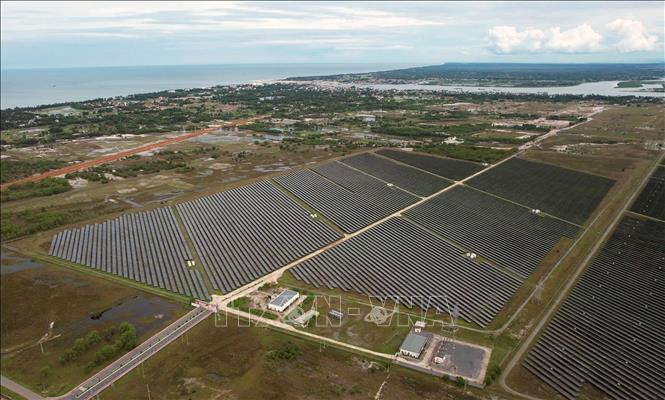
Sun and wind become resources
The pure white wind turbine blades rising high on Huong Hoa peak, stretching down to the Le Thuy sand area; the sparkling solar panels in Gio Linh; the Dakrong and Rao Quan rivers rotating hydroelectric turbines day and night… All are creating the appearance of a new Quang Tri - a place that turns harshness into resources, turns sunlight and wind into electricity.
Currently, the province has 11 hydropower plants with a total capacity of over 180 MW, providing stable electricity and regulating water for production and daily life. In addition, there are leading large-scale thermal power projects in the Central region such as Quang Trach 1 Thermal Power Plant and Quang Tri Thermal Power Plant, with a total capacity of nearly 3,000 MW, promising to contribute important electricity sources to the national system.
In particular, the direction with LNG gas is opening a turning point. The Hai Lang LNG power center, with a scale of thousands of MW, is of interest to many international corporations, not only producing clean electricity but also creating an industrial ecosystem of gas - seaport - logistics. The two LNG factories Quang Trach 2 and Quang Trach 3, with a total capacity of 3,000 MW, when operating, will supplement an important source of electricity for the Central region. Quang Tri's energy picture is thus diverse: hydropower, thermal power, LNG and renewable energy are present. It is a harmonious combination of tradition and modernity, creating a solid development axis for the province to confidently aim to become the "energy capital of the Central region" by 2030.
However, electricity production is only half the battle. Electricity only has real meaning when it is transmitted to users. Therefore, Quang Tri is focusing on investing in strategic infrastructure such as the 500kV Quang Tri 2 switching station cluster and the 500kV Lao Bao - Quang Tri line. When completed, these projects will not only bring electricity to major domestic load centers, but also connect with Laos and Thailand, opening up the prospect of Quang Tri becoming an energy transit point of the Mekong sub-region.
Accompanying businesses
The difference in Quang Tri lies not only in the sunshine and wind, but also in the way the government accompanies businesses. In the past few years, a series of large corporations have chosen this place to invest: from wind power in Huong Hoa, Le Thuy, Quang Ninh to solar power in Gio Linh, Ngu Thuy; from thermal power in the Southeast Quang Tri Economic Zone to billion-dollar LNG complexes in Hai Lang, Quang Trach. Quang Tri today is like a vibrant "energy construction site".
Mr. Nguyen Ngoc Vu, Director of Gio Thanh Solar Power Plant, said: “The provincial government always creates favorable conditions, removes procedures and clears land quickly. The biggest challenge now is the electricity price mechanism and transmission infrastructure. But if the Central Government soon resolves the issues, Quang Tri will certainly become the leading attractive destination in the Central region.”
According to Mr. Ho Xuan Hoe, Director of the Department of Industry and Trade, Quang Tri identified the energy industry, especially renewable energy, as a breakthrough sector promoting green growth and sustainable development. The province focuses on implementing 5 groups of synchronous solutions. First of all, reviewing and updating energy projects, integrating them into the provincial planning and proposing additions to the National Power Planning. At the same time, promoting administrative procedure reform, shortening appraisal and licensing, implementing a transparent one-stop mechanism to facilitate investors.
A specialized working group was established to remove difficulties and ensure project progress in line with people's interests. The province also supports businesses in accessing preferential policies and researching specific mechanisms to increase investment attraction. In particular, it focuses on training highly skilled human resources, linking training facilities and prioritizing local labor recruitment, both meeting production needs and increasing income and stabilizing the lives of people in the project area.
In fact, many projects have proven effective, such as Huong Tan Wind Power Plant, Gio Thanh Solar Power Plant, Ha Rao Quan Hydropower Plant, etc. Some investors are proposing to expand their scale. Mr. Dao Van Quang, Deputy General Director of Song Cau Joint Stock Company, said that investors always receive active support from the government from the project planning, construction to operation stages, thanks to which the projects operate stably and effectively.
Mr. Quang also said that to take advantage of the hydropower resources of the Rao Quan River, the Ha Rao Quan Hydropower Plant is proposing to double its capacity and deploy more wind and solar power projects in Quang Tri. Mr. Shin Byung Chul, an international investor, explained: “We chose Quang Tri not only because of the sunshine and wind, but also because of our strong desire for development. The provincial government is determined to create the best conditions for investors. That is the reason we invested in Quang Tri, instead of other places with similar potential.”
Energy experts assess that Quang Tri is becoming a “pillar” in the national power system. The combination of abundant renewable energy and LNG helps balance supply and demand, reducing the risk of dependence on a single power source. Combined with the strategic location of the gateway to the East-West corridor, connecting My Thuy port and the logistics system, Quang Tri has all the conditions to form a large-scale energy - industry - service ecosystem.
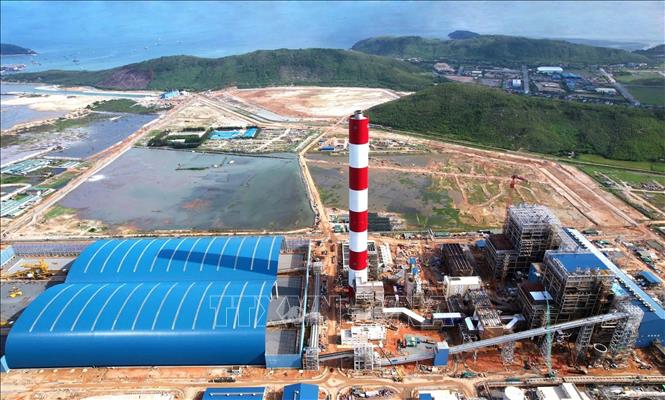
Aspiration to spread
Behind the billion-dollar energy projects, Quang Tri is still a land devastated by war. Therefore, today's aspiration is even more meaningful. Deputy Secretary of the Quang Tri Provincial Party Committee Nguyen Chien Thang emphasized: "The goal for the 2025 - 2030 term is to turn Quang Tri into a new growth pole of the Central region. The province focuses on completing planning, strategic infrastructure, administrative reform associated with improving competitiveness; developing four economic pillars: energy, logistics, tourism and green agriculture . In which, energy is a breakthrough sector, leading growth".
Chairman of the Provincial People's Committee Tran Phong affirmed that the choice to develop clean energy is not only for economic benefits, but also for sustainability, contributing to ensuring national energy security and for future generations. He acknowledged that the challenges are still great, with huge investment capital, modern technology, and perfecting policy mechanisms, but he believes that Quang Tri has enough confidence and determination to turn aspirations into reality. That confidence is not only in the leaders but also in the hearts of the people.
Mrs. Tran Thi Mai, a retired teacher in Hai Lang, confided: “In the past, I only hoped for peace. Now I hope my children and grandchildren will have jobs and my hometown will escape poverty. I heard that Quang Tri is becoming an energy center, I believe that is a new opportunity.”
In the atmosphere of preparation for the first Congress of the Quang Tri Provincial Party Committee after the merger, term 2025 - 2030, the story of clean energy became the focus. From the thematic conference to the voter meeting, the phrase "energy center" echoed everywhere. That aspiration is no longer far away. On the Huong Hoa windy hill, on the Gio Linh solar field, in the drawings of offshore wind power projects... all are connecting to form a big picture: Quang Tri not only lights up itself, but also contributes to lighting up the Central region and the whole country.
Today, Quang Tri is far different from the land that was once submerged in bombs and bullets. From an “economic depression”, the province is rising to become the “energy capital of the Central region”. The 2030 strategy has been clearly defined: sun and wind as the foundation, infrastructure and mechanisms as pillars, aspirations and people's hearts as the driving force. If steadfast on that path, Quang Tri will not only be the pioneer for clean energy in the Central region, but also become a symbol of national green transformation. On the energy map of Vietnam, the mark of Quang Tri will shine brightly and sustainably from the rotation of turbines, solar panels under the sun to the trust in the hearts of the people, all working together for a green, clean and prosperous future.
Source: https://baotintuc.vn/kinh-te/trung-tam-nang-luong-sach-mien-trung-bai-cuoi-khat-vong-2030-20251003144247911.htm


![[Photo] General Secretary To Lam attends the 8th Congress of the Central Public Security Party Committee](https://vphoto.vietnam.vn/thumb/1200x675/vietnam/resource/IMAGE/2025/10/4/79fadf490f674dc483794f2d955f6045)



![[Photo] Bustling Mid-Autumn Festival at the Museum of Ethnology](https://vphoto.vietnam.vn/thumb/1200x675/vietnam/resource/IMAGE/2025/10/4/da8d5927734d4ca58e3eced14bc435a3)
![[Photo] Solemn opening of the 8th Congress of the Central Public Security Party Committee, term 2025-2030](https://vphoto.vietnam.vn/thumb/1200x675/vietnam/resource/IMAGE/2025/10/4/f3b00fb779f44979809441a4dac5c7df)
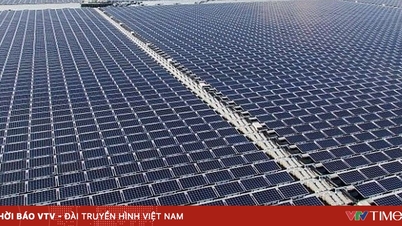

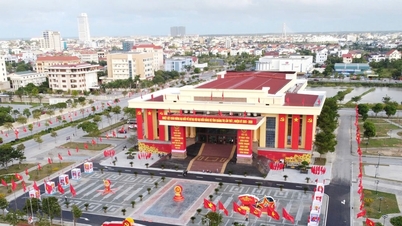

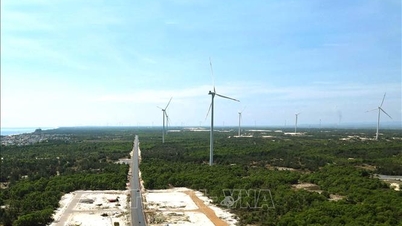
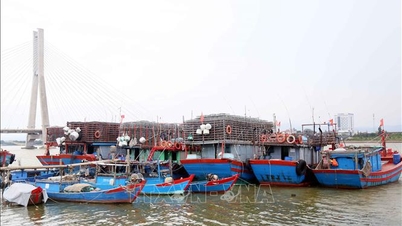

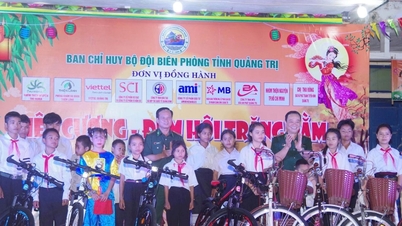
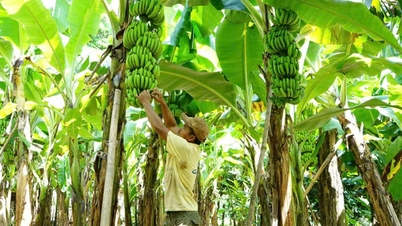

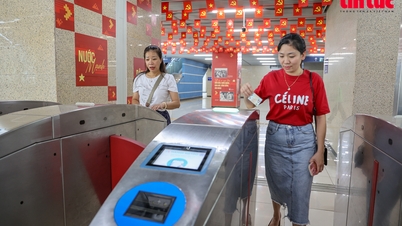


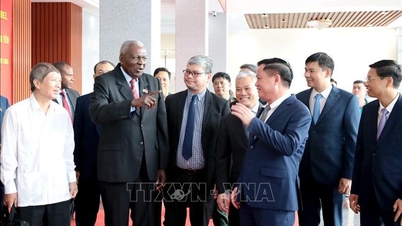
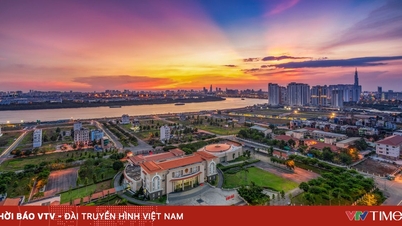





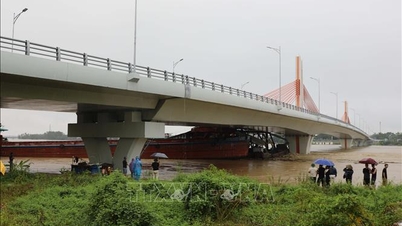
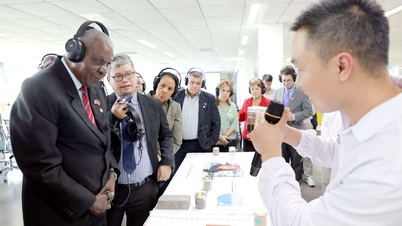
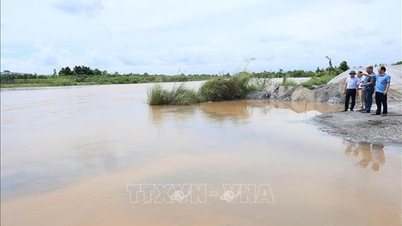
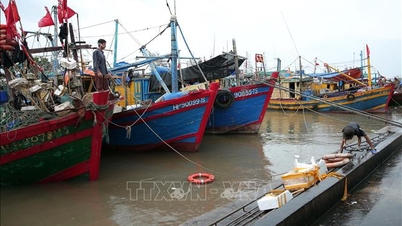



























![[VIDEO] Summary of Petrovietnam's 50th Anniversary Ceremony](https://vphoto.vietnam.vn/thumb/402x226/vietnam/resource/IMAGE/2025/10/4/abe133bdb8114793a16d4fe3e5bd0f12)

![[VIDEO] GENERAL SECRETARY TO LAM AWARDS PETROVIETNAM 8 GOLDEN WORDS: "PIONEER - EXCELLENT - SUSTAINABLE - GLOBAL"](https://vphoto.vietnam.vn/thumb/402x226/vietnam/resource/IMAGE/2025/7/23/c2fdb48863e846cfa9fb8e6ea9cf44e7)





















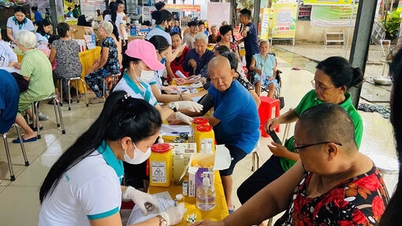

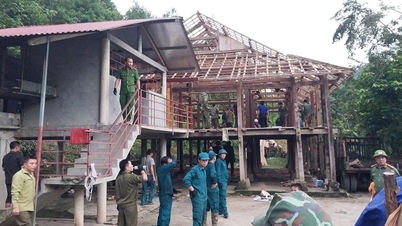

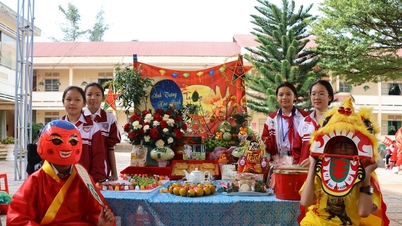









Comment (0)